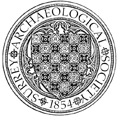Outwood Lane, Chipstead
Watching brief by P Harp of Plateau during the installation of a new water main recovered a small number of Mesolithic or Neolithic flints. Part of the route passed close to Dene Farm (now the Rambler’s Rest public house), where a significant quantity of 13th century pottery was revealed during reinstatement works. Place-name evidence records habitation at Dene Farm as far back as 1301


